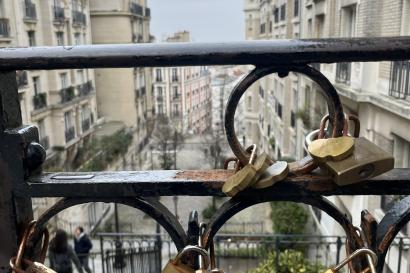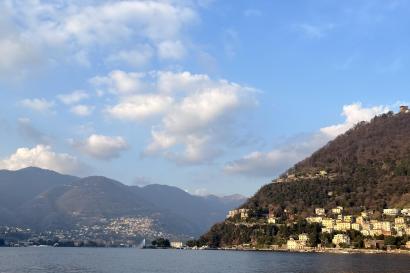Millions of people visit Rome every year, and for good reason! It’s a crazy, metropolitan city with tons of sights to see, tours to take, and food to eat. Rome is great place to study abroad because there is so much to see! I firmly believe that you can’t do Rome in a weekend, too much history is trapped in the city beyond the museums and tourist attractions. Spending weekends in town has been a fantastic move for me because it seems as though new things pop up every day for me to explore. But after the Trevi Fountain, Pantheon, Colosseum, Vatican, and Borghese Gallery, sometimes you want something a little off the beaten path.
I had the chance to connect with some alumni from UVa that had been living in Rome for a few years and ask about the best hidden gems, and the ‘Scavi Tour’ kept coming up. Even while I was taking a tour of the Colosseum my tour guide asked if anyone had gotten Scavi tickets. When we all replied no she responded “ah, well then you might have to come back to Rome for that one.”
I was very intrigued at this point and did some research. The Scavi Tour a tour of the catacombs under St Peter’s Basilica, centered around the tomb of St. Peter. Tickets available only by email request to the office, but only cost 13 euros. They are very difficult tickets to get as they only let 350 people into the catacombs each day, normally requested months in advance. This felt like a lot of work for a tour, but I emailed anyway requesting one ticket and listing the dates I was available.
And it worked! On Wednesday I was told there was a cancellation in the tour on Friday, and I quickly confirmed my spot. I had crazy high expectations for this tour from all I’d heard. Let me tell you, it delivered.
You start by going through the ancient Roman “street of the dead,” which was ridiculously cool. In ancient Rome, there was a law that bodies couldn’t be buried inside the city walls, and so just outside the city these streets were lined with tombs and structures to hold the bodies or ashes of loved ones. It served as places to go to celebrate the dead and offer sacrifices. Obviously in ancient times, these streets were in open air like normal everyday streets; but after thousands of years, street level rose so much that it's completely underground. You enter through a tiny stairwell and duck through a 5’6” doorway into the humid and dark street of the dead deep under the basilica, and it’s as if you're in a whole other world.
You get a chance to peek into the ornate and beautiful tombs of different ancient families as you walk. Some adorned with pagan gods, some with Christian influences, and some with Egyptian carvings or paintings on sarcophagi. The mix of cultures is amazing, because you don't think of Ancient Rome as having so many powerful influences at the same time! There was even a depiction of Jesus as Helios the Sun god, a really rare sight in ancient history that shows the pagan and Christian fusion of art and culture.
The next section is about St. Peter’s remains, which are controversial but fascinating at the same time. It’s known that St. Peter was crucified upside down in St. Peter’s square (right outside the basilica) around age 65. In the 19th century the Pope made an announcement that he found St. Peter’s tomb, which was true, but the remains were not found until later. My tour guide said they sent away samples to anthropologists to analyze, without telling them the origin of the bones. The anthropologists apparently decided the bones were from the first century and belonged to a man between the age of 60 and 70. Additionally, the skeleton was found without any foot bones, and typically those crucified upside down had their feet removed when taken down from the cross. I was fascinated.
What was interesting about this tour was that the Church’s position that they are St. Peter’s remains, but the tour guide did an awesome job of explaining how we can not know with 100% certainty because we don't have DNA for comparison. That being said, seeing the literal layers of history, alter stacked upon alter, on the remains was remarkable and not something I’ll soon forget.
In conclusion, if you're studying abroad in Rome or visiting, request tickets! This tour is ridiculously awesome but you don’t hear much about it because it can’t accommodate the masses of people like the Colosseum or the Vatican Museums. It’s well worth your while and will be one of the most unique tours you can find anywhere. Hidden gems are the best way to see Rome, in my opinion!

Sarah Craig
<p>I am a Cognitive Science Major (which encompasses Cognitive Psychology, Computer Science, Linguistics, Philosophy, and Neuroscience), with a concentration in Cognitive Psychology. I am also a huge history nerd, and am more than excited to study abroad in a place packed with so much historical significance. I am the Assistant Music Director and Vice President of a philanthropic A Capella group called The AcHOOstics, and I have a very decent background in music! We sing at nursing homes and for fundraising events, and a portion of our proceeds go to the UVa Children's Hospital. Additionally, I volunteer in a program called Holiday Sharing, where we have been working for months in partnership with the Salvation Army to provide tons of food and toys to families in the Charlottesville area. I love to play piano, and I'm a big reader.</p>








